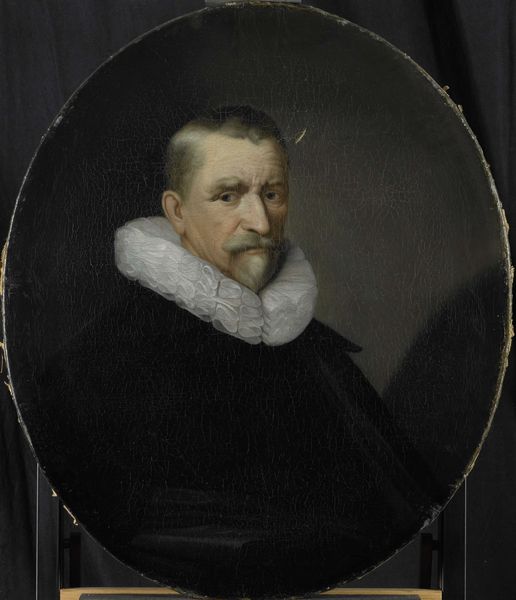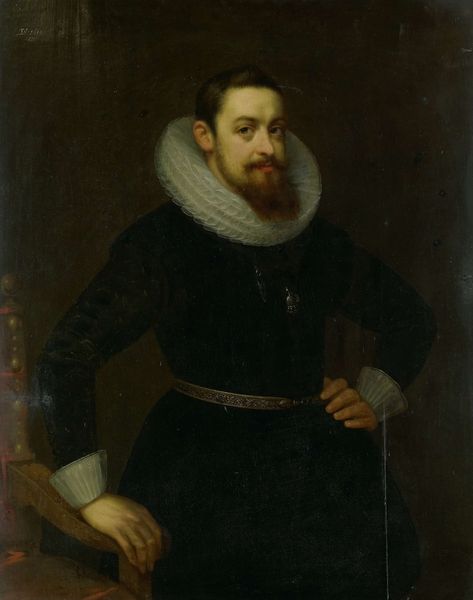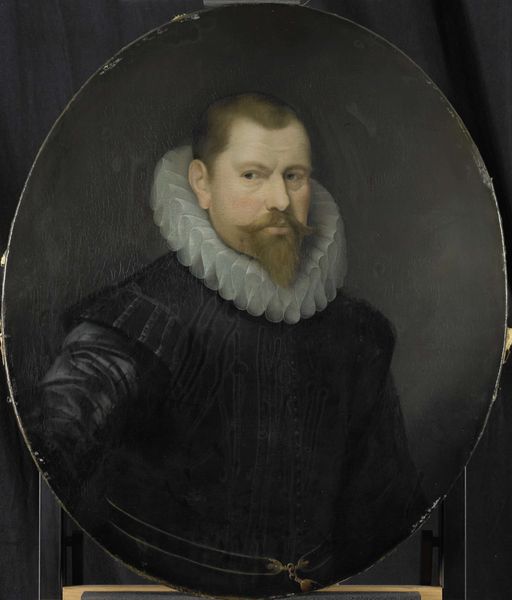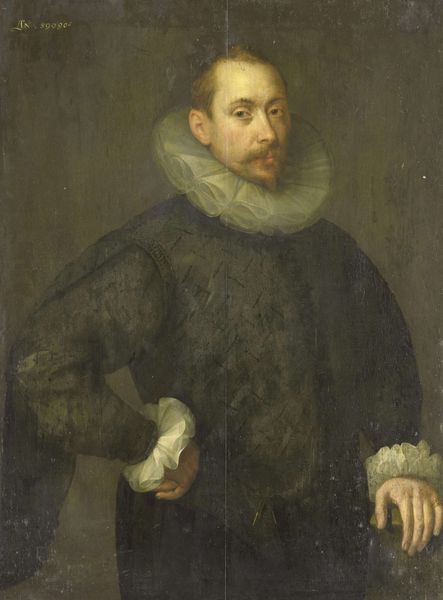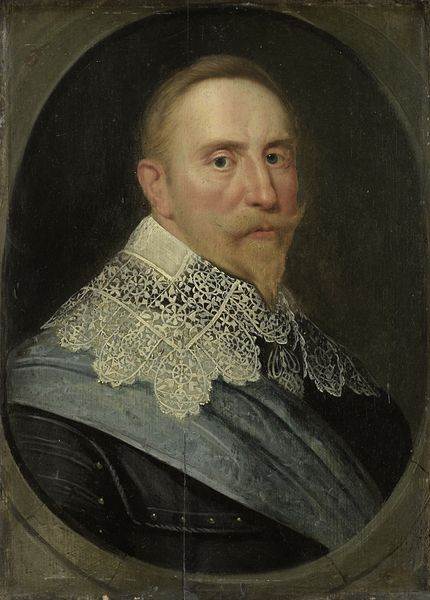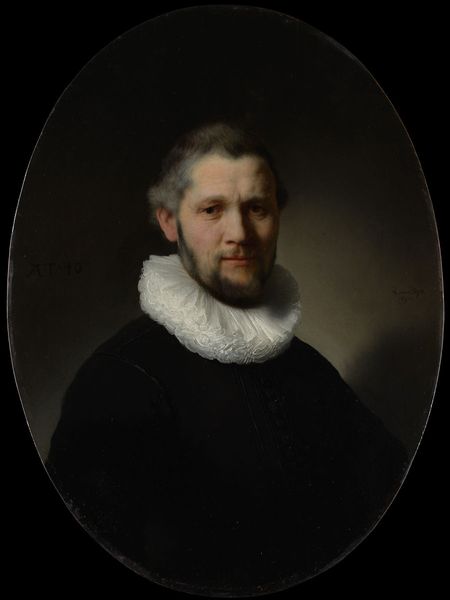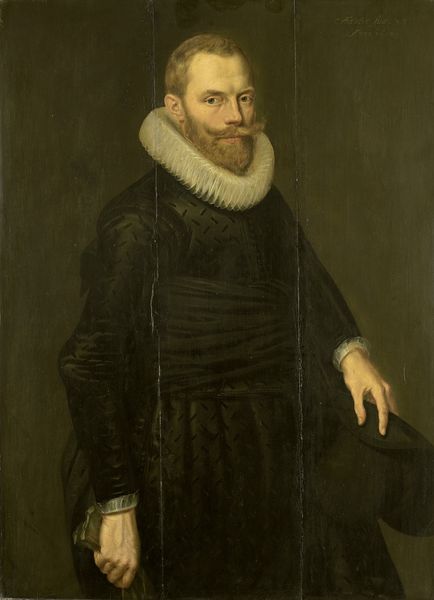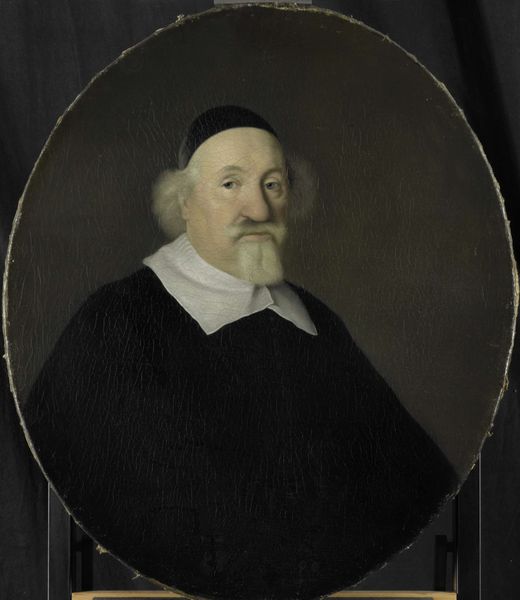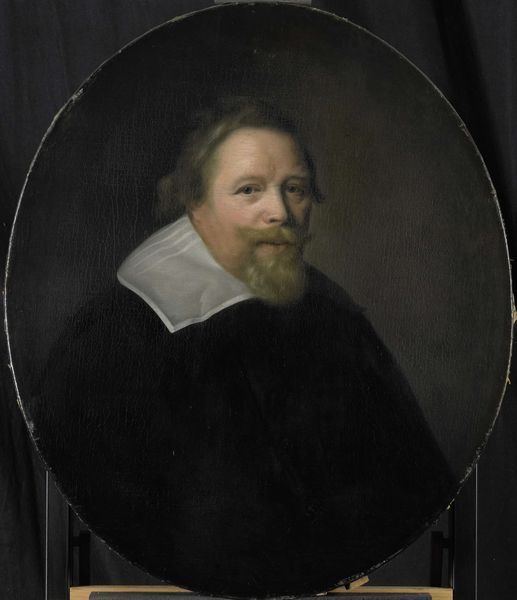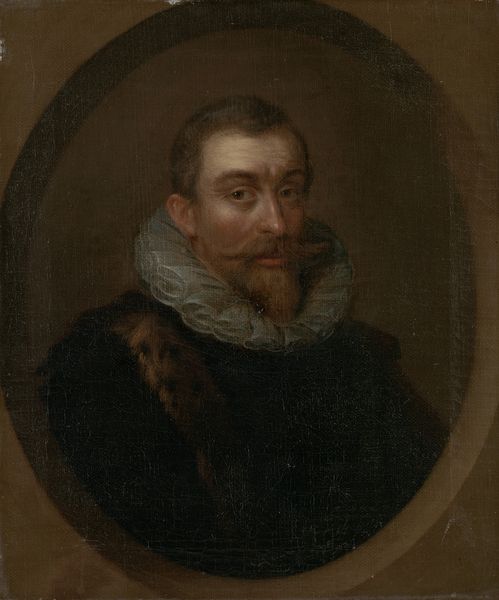
Portrait of Ewoud Pietersz van der Horst, Director of the Rotterdam Chamber of the Dutch East India Company, elected 1618 1695 - 1722
0:00
0:00
oil-paint
#
portrait
#
baroque
#
oil-paint
#
academic-art
#
realism
Dimensions: height 82 cm, width 68 cm
Copyright: Rijks Museum: Open Domain
Pieter van der Werff painted this portrait of Ewoud Pietersz van der Horst, a director of the Dutch East India Company, in the late 17th or early 18th century. Van der Horst's somber attire and the stark white ruff are symbolic of his status and the values of the time. The ruff, a seemingly simple collar, carries a weight of cultural significance. In earlier eras, similar neckwear signified religious piety, as seen in depictions of early Christian martyrs. Here, the ruff has evolved, shedding its explicit religious connotations to become a symbol of civic virtue, honesty, and the unadorned truthfulness expected of a man of commerce and governance. Consider how this symbol, like the ancient gestures of orators, has been passed down, transformed, and repurposed. The collective memory subtly influences our perception, and the emotional power of these symbols resonates even when their original context fades, engaging our subconscious on a profound level. This portrait speaks to how symbols resurface, evolve, and acquire new meanings in different historical contexts.
Comments
No comments
Be the first to comment and join the conversation on the ultimate creative platform.
